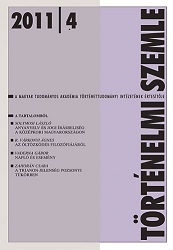Az öltözködés filozófiájáról
On the Philosophy of Dressing
Author(s): Ágnes, R. VárkonyiSubject(s): Cultural history, Social history
Published by: Magyar Tudományos Akadémia Bölcsészettudományi Kutatóközpont Történettudományi Intézet
Keywords: Gustaf Utterström; Fernand Braudel; Hungarian national costume;
Summary/Abstract: Dressing as a form of human existence is examined by science as an exceptionally rich and complex manifestation of culture. On the graph constituted by civilisation, politics and social structure, it is analysed as a phenomenon which offers information on such hardly accessible layers of reality as personality and communal expectations, the Claims of the body, aesthetics, fashion, orders of custom, information, identity, economic preconditions, luxury and representation, the diversity and basic unity of dresses, and of their sacrality and capacity of myth creation in early modern Europe. In the approach of the present study, the philosophy of dressing is expressed by the sum of these manifold aspects. // The analysis is based on a wide range of sources: alongside the rich written documentation, it uses archeological material, pictorial representations, but also the carefully restored and expertly arranged decorative garments of the Esterházy treasury from the 16th–17th centuries, which had survived the war under the ruins of the palace bombed to the ground. // The author also takes sides in the old dispute of Hungarian historiography with regard to Hungarian national costume. She comes to the conclusion that whereas the lower ranks of society were largely supplied by domestic cloth production and by tailors’ guilds producing for the market, the material from which the garments for the nobility, the urban elite and the aristocracy were made was mainly imported from abroad. Almost all the various textiles of the contemporary world, from Spain to Poland, Italy and Constantinople, could be found in the Carpathian basin. The Hungarian character of the costume was the result of the cut, of the decoration, of the colours applied, and of the inclination to synthetis and abstraction which manifested itself in the embroidery.
Journal: Történelmi Szemle
- Issue Year: 2011
- Issue No: 04
- Page Range: 503-536
- Page Count: 34
- Language: Hungarian

